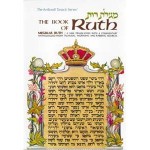Ruth as an allegory
 All things being equal, we should have read the Book of Ruth on Pesach.
All things being equal, we should have read the Book of Ruth on Pesach.
After all, the events in the story take place at the season of the barley harvest (Ruth 1:22), which occurs at Pesach time, not Shavu’ot.
But because the story can be seen as an allegory of the Children of Israel leaving Egypt behind and reaching Sinai – the locale of the Shavu’ot Revelation – our tradition wisely fits the Book into the Shavu’ot services.
Let’s ask what happens in Ruth’s life.
She comes from an idolatrous background, like the people of Israel in Egypt. She has become acquainted with Jews and Judaism by virtue of her contacts with her husband’s family.
She chooses to throw in her lot with Jews and Judaism, to say, “Your people will be my people: your God will be my God” (Ruth 1:16-17), which is the theme of Shavuot when Israel and God make a covenant binding them together, one to the other.
She knows that being a Jew will not be easy, but she makes a commitment that at first sight seems rash but it grows on her, so that in the end Judaism is good for her and she is good for Judaism.
Indeed, she becomes the ancestor of King David (Ruth 4:22), and the whole future of the Jewish story is made possible because of her self-redemption – truly an allegory of all that matters in Shavu’ot.
Other articles on Ruth:
The Book of Ruth program notes
Ruth’s name
Book of Ruth – a feminist tract?



